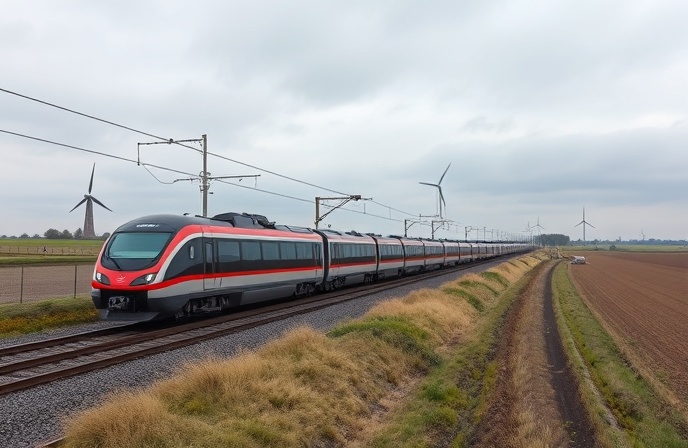UK Rail’s Digital Revolution: Faster, Greener Trains

The Revolution of Digital Signaling on the UK Rail Network
This article explores the significant advancements Network Rail (NR) is making in its digital signaling program, focusing on recent deployments in South West London and their broader implications for the UK rail network. The transition from outdated analog systems to modern digital technology represents a substantial investment aimed at improving reliability, reducing delays, and significantly lowering the network’s carbon footprint. This modernization is not merely a technological upgrade; it is a strategic shift impacting passenger experience, operational efficiency, and environmental sustainability. We will examine the specifics of the South West London project, analyze the positive impacts observed in similar projects, and discuss the long-term benefits and challenges associated with widespread digital signaling adoption across the UK rail infrastructure. This exploration will delve into the technical aspects of the upgrade, its economic impact, and its role in creating a more resilient and environmentally responsible railway system for the future.
The Feltham and Wokingham Resignalling Programme
Network Rail’s £116 million Feltham and Wokingham resignalling scheme exemplifies the organization’s commitment to digital transformation. This project involved the installation of 116 new digital signals, encompassing the replacement of aging infrastructure dating back to 1974. The scope of work extended beyond signal installation, including laying 11km of new cabling, refurbishing 14km of existing cable ducts, creating 27 new under-track cable routes, and upgrading seven level crossings. This comprehensive approach addresses not only signaling but also the underlying infrastructure, enhancing overall system resilience and reducing future maintenance needs. The commissioning of these new signals represents a crucial milestone, promising improved reliability and reduced delays for passengers utilizing the Windsor Lines.
Tangible Results: Lessons from South London
The success of similar digital signaling upgrades in South London provides a compelling case study for the expected benefits of the Feltham and Wokingham project. Following the switch-on of the new digital signaling system last Christmas, delays on the lines between Balham, Clapham Junction, and London Victoria were reduced by a remarkable 55%. This translates to a decrease from approximately 4,000 delays per month to around 1,800, representing a substantial improvement in service reliability and a significant reduction in passenger inconvenience – roughly 36 fewer hours of delays per month. This demonstrable improvement in operational efficiency serves as strong evidence supporting the wider adoption of digital signaling technology across the network.
Environmental Sustainability: A Key Driver
Beyond operational efficiency, the digital signaling program contributes significantly to Network Rail’s broader environmental sustainability goals. The modernization effort is expected to yield substantial carbon dioxide reductions. For instance, the ongoing digital signaling implementation on the East Coast Main Line (ECML) is projected to save 55,000 tonnes of CO2 annually upon full completion. This reduction in carbon emissions is achieved through improved energy efficiency of the digital signaling system compared to its older analog counterpart, highlighting the environmentally responsible nature of this technological upgrade.
Conclusion
Network Rail’s ongoing investment in digital signaling represents a transformative shift for the UK rail network. The successful implementation in South London, with its demonstrable reduction in delays, provides a strong indication of the positive impact this technology can have on passenger experience and operational efficiency. The Feltham and Wokingham project, with its substantial investment and comprehensive scope, further underscores the commitment to modernizing the infrastructure. Beyond immediate improvements in reliability and punctuality, the digital signaling upgrade contributes significantly to environmental sustainability, aligning with Network Rail’s broader commitment to reducing its carbon footprint. The long-term benefits extend beyond individual projects, promising a more efficient, reliable, and environmentally responsible railway system for the UK. This strategic initiative underscores a shift towards a more technologically advanced and sustainable future for rail travel, setting a precedent for similar upgrades across the country and demonstrating a proactive approach to addressing the challenges and opportunities presented by the ever-evolving landscape of modern railway operations. The substantial reduction in delays, coupled with significant carbon emission savings, offers a compelling case for the widespread adoption of this technology, highlighting its crucial role in enhancing both passenger satisfaction and environmental responsibility within the UK’s rail infrastructure. The success of these projects lays the groundwork for future network-wide improvements, paving the way for a more efficient, resilient, and sustainable railway system.



